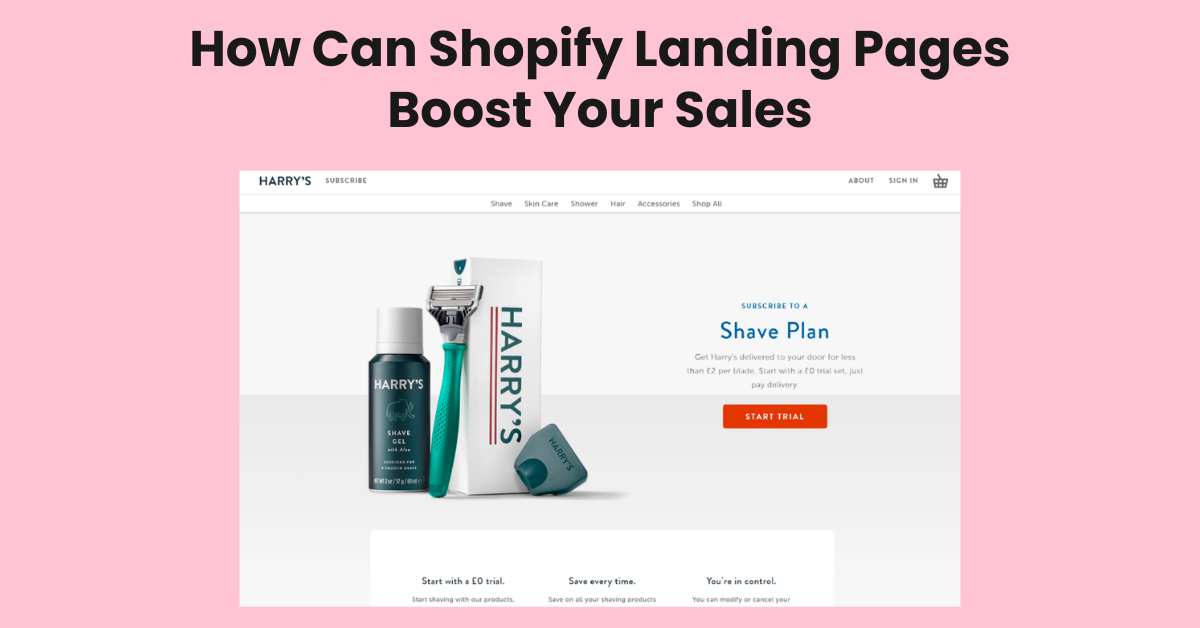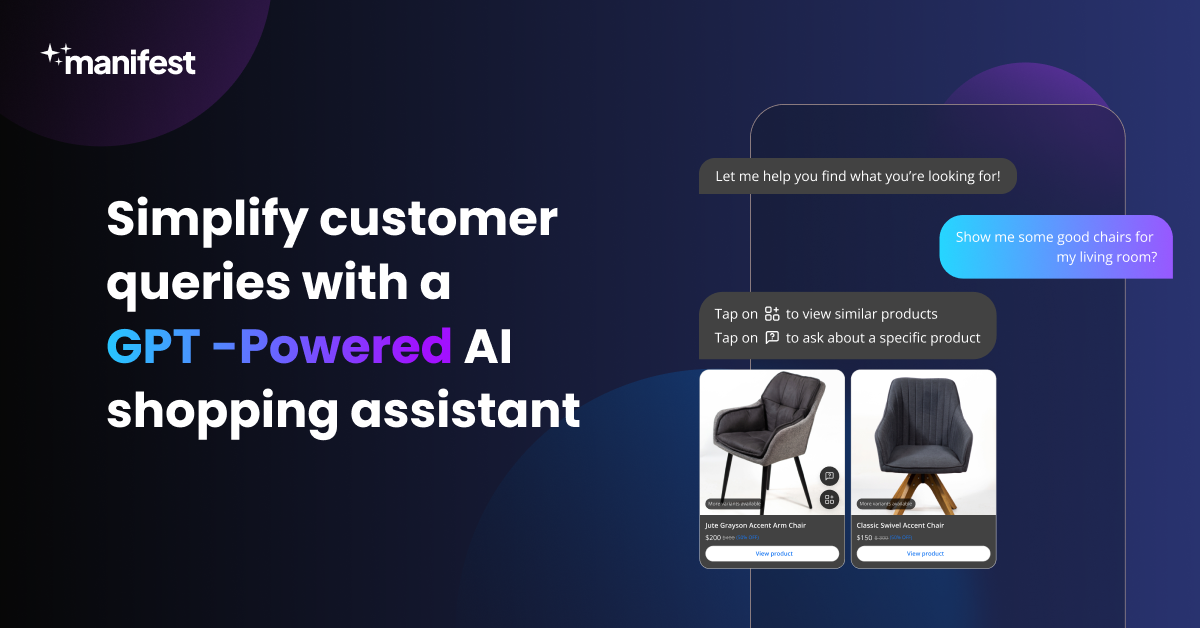How Can Shopify Landing Pages Boost Your Sales?

Shopify landing pages are more than just part of your online storefront; they're essential tools for driving sales. In this blog, we'll explore how effectively designed landing pages can transform your Shopify store's performance. These pages do more than showcase products; they create a tailored experience that guides visitors towards making a purchase. We'll look at the key elements that make a landing page successful, from clear messaging and engaging design to strategic calls-to-action. Understanding how to leverage these pages can make a significant difference in attracting and retaining customers, ultimately boosting your sales.
What are Shopify Landing Pages?

Shopify landing pages are specialized web pages within a Shopify store, designed with a specific focus or goal in mind, usually linked to marketing campaigns. Unlike general pages that offer various information, landing pages for Shopify are streamlined for a singular purpose, like promoting a specific product, event, or sale. They are crafted to capture the visitor's attention quickly and encourage a particular action, such as making a purchase or signing up for a newsletter. Key features often include persuasive copy, high-quality images, and clear call-to-action buttons. Effectively used, Shopify landing pages can significantly enhance the customer journey, leading to increased conversions and sales.
Key Elements of Effective Shopify Landing Pages

Effective Shopify landing pages are crucial for captivating potential customers and encouraging sales. Here are the key elements that make them successful:
- Clear and Concise Headlines: The headline should instantly convey the value of the product or offer, grabbing the visitor's attention and enticing them to read on.
- Compelling Visuals: High-quality images or videos that showcase the product or service can significantly impact customer engagement and interest.
- Focused Content: The content should be concise and centered around the main offer or product, avoiding any unnecessary distractions or information.
- Strong Call-to-Action (CTA): A clear and prominent CTA button is vital. It guides visitors on what to do next, whether it's making a purchase, signing up, or learning more.
- Customer Testimonials and Trust Signals: Including reviews, ratings, or trust badges can build credibility and trust among potential customers.
- Mobile Responsiveness: With the increasing use of mobile devices, ensuring your landing page is mobile-friendly is crucial for reaching a wider audience.
- Fast Loading Times: Pages that load quickly are essential for keeping potential customers engaged and reducing bounce rates.
- Easy Navigation: While being standalone pages, they should still provide easy navigation for those who want to explore more of your website.
How to create landing page on Shopify?

Creating a landing page on Shopify is a straightforward process that can greatly enhance your online store's appeal and functionality. Here’s how to do it:
- Choose a Template or Start from Scratch: Shopify offers a range of templates suited for various types of landing pages. Select one that aligns with your campaign’s goals, or start with a blank page for full customization.
- Customize Your Design: Utilize Shopify's drag-and-drop editor to customize your landing page. Add elements like text, images, and videos to create an engaging and visually appealing page. Pay attention to your brand’s color scheme and fonts for consistency.
- Craft Compelling Content: Write clear and persuasive copy that communicates the value of your offer. Your headline should be attention-grabbing, and the body of your content should concisely explain the benefits of your product or service.
- Include a Strong Call-to-Action (CTA): Your CTA should be clear and direct, encouraging visitors to take the desired action, whether it's making a purchase, signing up for a newsletter, or downloading a guide.
- Add Testimonials or Reviews: If possible, include customer testimonials or product reviews to build credibility and trust.
- Optimize for SEO: Use relevant keywords in your content and meta tags to improve the page’s visibility in search engine results.
- Test and Publish: Before going live, preview your page to ensure everything looks and works as intended. Once satisfied, publish your page.
- Monitor and Optimize: After your landing page is live, use Shopify’s analytics to track its performance and make adjustments as needed to improve its effectiveness.
Strategies to Optimize Your Shopify Landing Pages
Optimizing your Shopify landing pages is key to improving their effectiveness and boosting conversions. Here are some strategies to enhance your pages:
- Focus on Loading Speed: Ensure your landing page loads quickly to reduce bounce rates. Compress images and minimize the use of heavy scripts.
- Responsive Design: Make sure your landing page is mobile-friendly, as a significant portion of online shoppers use mobile devices.
- Clear Call-to-Action (CTA): Your CTA should be prominent and clear, guiding visitors towards the action you want them to take, like 'Buy Now', 'Sign Up', or 'Learn More'.
- A/B Testing: Regularly test different elements of your landing page, such as headlines, images, and CTAs, to see what resonates best with your audience.
- High-Quality Visuals: Use professional and appealing images or videos that accurately represent your products or services.
- Compelling Copy: Write clear, persuasive content that highlights the benefits of your offer and addresses your target audience's needs or pain points.
- SEO Optimization: Include relevant keywords in your content and meta tags to improve search engine rankings.
- Social Proof: Add customer testimonials, reviews, or trust badges to build credibility.
- Simplify the Form Fields: If your landing page includes forms, keep them simple and straightforward to encourage completions.
5 Best Shopify landing pages
When exploring the best Shopify landing pages, it's essential to consider their design, usability, and effectiveness in converting visitors. Here are five notable Shopify landing page examples:
- Minimalist Design Page:
- Definition: Features a clean, uncluttered design focusing on simplicity.
- Best Use: Ideal for brands promoting a small number of products or a single service, where clarity and focus are key.
- Highlights: Ensures a distraction-free environment, leading to a higher concentration on the call-to-action.
- Product Showcase Page:
- Definition: Designed to highlight a specific product or collection in detail.
- Best Use: Perfect for new product launches or featuring best-sellers.
- Highlights: Includes high-quality images, detailed descriptions, and often interactive elements like video demos.
- Event or Sale Promotion Page:
- Definition: Tailored for time-sensitive events or sales promotions.
- Best Use: Useful for holiday sales, limited-time offers, or event registrations.
- Highlights: Often includes countdown timers and bold, persuasive text to create urgency.
- Storytelling Page:
- Definition: Uses narrative and visuals to tell a brand's story.
- Best Use: Suitable for brands with a strong story or mission, like artisanal products or eco-friendly initiatives.
- Highlights: Engages customers emotionally, leading to a deeper brand connection.
- Testimonial-Focused Page:
- Definition: Centers around customer testimonials and reviews.
- Best Use: Great for services or products where trust and credibility are crucial.
- Highlights: Builds confidence in the product through real customer experiences, often paired with user-generated content.
Empowering your Shopify landing pages with Manifest AI

Manifest AI is an advanced GPT-powered shopping assistant designed for Shopify stores. It enhances the online shopping experience by providing intelligent and personalized customer interactions. Here are some points on how it can help you with this:
- Personalized Experience: Manifest AI provides a personalized shopping experience for each visitor, using AI to recommend products based on user behavior and preferences.
- Intelligent Interactions: The AI understands and responds to customer inquiries in a human-like manner, offering relevant information and assistance.
- Efficiency in Navigation: By integrating Manifest AI, customers can find products quicker and more accurately, enhancing the effectiveness of your landing pages on Shopify.
- Increased Engagement and Sales: The AI's ability to engage customers in meaningful conversations leads to higher conversion rates and sales.
Conclusion
Shopify landing pages are powerful tools for boosting sales by creating focused, conversion-oriented experiences for visitors. These pages are designed to highlight specific products, promotions, or campaigns, capturing visitor attention and guiding them towards making a purchase. With clear calls-to-action, compelling visuals, and targeted messaging, landing pages reduce distractions and hone in on the sales pitch. By providing a streamlined path from discovery to purchase, they effectively reduce the steps a customer needs to take, thereby increasing the likelihood of conversion. Additionally, well-optimized landing pages can improve search engine rankings, drawing more traffic to the store. Overall, Shopify landing pages play a crucial role in converting visitors into customers, directly impacting sales and revenue.
FAQs
How to change landing page on shopify?
To change a landing page on Shopify, go to your Shopify admin, navigate to 'Online Store' and then 'Pages.' Select the page you wish to edit, make your changes, and save. You can also create a new page and set it as your landing page by adjusting the settings in your theme's 'Navigation' section.
Does Shopify have landing pages?
Yes, Shopify does support landing pages. Users can create and customize landing pages within their Shopify store using the platform's built-in tools and features. These pages can be tailored for specific marketing campaigns, product launches, or promotions to enhance customer engagement and drive sales. Additionally, there are various Shopify-compatible apps available that offer advanced features for designing and optimizing landing pages.

.png)
